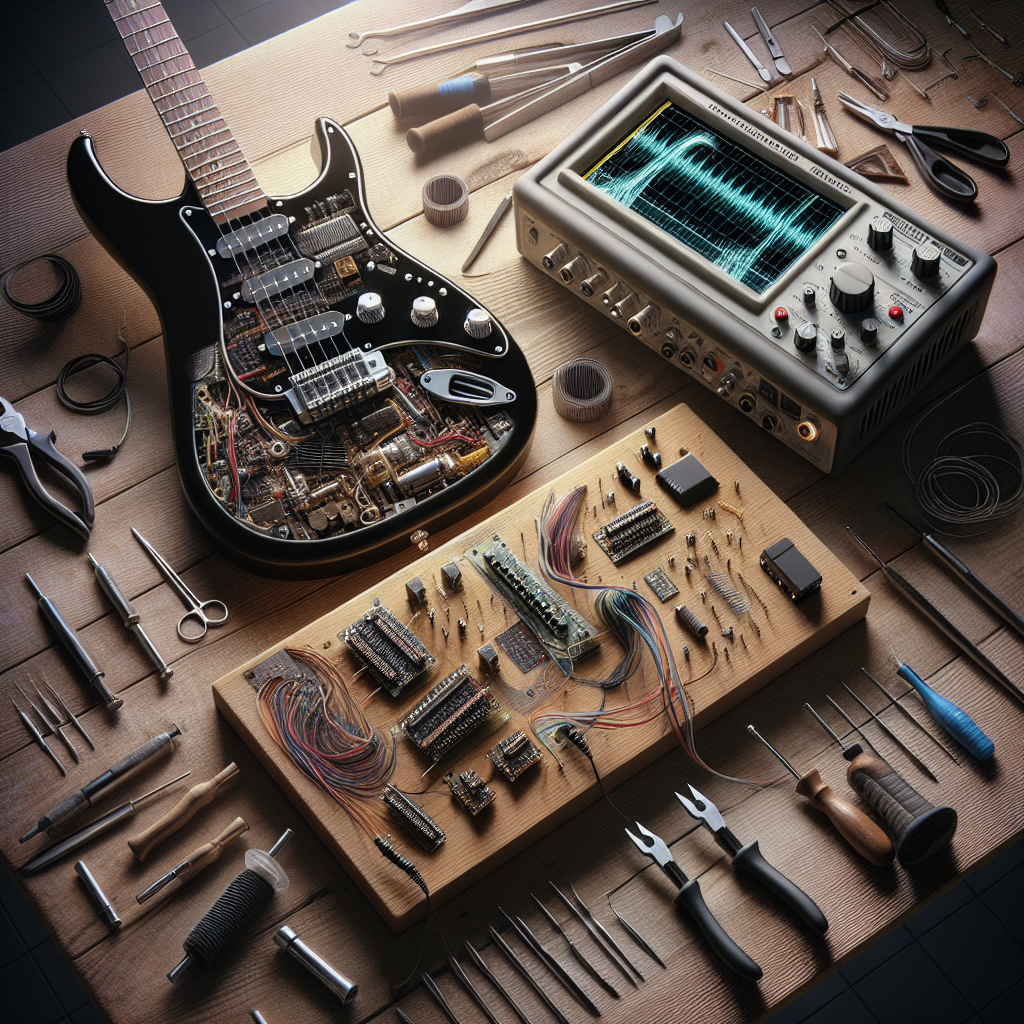
7 Ways to Master Guitar Signal Analysis with an Oscilloscope
The world of guitar and audio technology is vast and filled with intricate details. Among the numerous tools available to musicians and audio engineers, the oscilloscope stands out as a powerful device for understanding and analyzing guitar signal waveforms. Discovering how to use an oscilloscope to analyze guitar signals can significantly enhance your knowledge of how guitars work and improve your sound engineering skills. This guide will take you through the step-by-step process of using an oscilloscope to dissect guitar waveforms, providing valuable insights into the fundamental aspects of sound that you might never have noticed before.
1. Understanding the Basics of an Oscilloscope
An oscilloscope is a device that allows you to view voltage signals as waveforms on a screen. These waveforms provide a graphical representation of how signals change over time. For guitarists and sound engineers, an oscilloscope can reveal the nuances in the signal output from an electric guitar, allowing you to visualize what’s happening electronically as you play.
Before using an oscilloscope, you should familiarize yourself with its main components: the display screen, controls for time base, and voltage (vertical) scales. Understanding these will be critical in capturing and interpreting your guitar’s signal accurately.
2. Setting Up Your Oscilloscope for Guitar Signal Analysis
To begin analyzing guitar signals, connect your guitar to an amplifier, ensuring the amplifier’s output is connected to the oscilloscope’s input. Most oscilloscopes will require a BNC connector or probe to capture the signal. Set the time base and voltage levels appropriately to see a clear waveform. Typically, setting the time base to a few milliseconds per division and the amplitude to a few volts per division works best for guitar signals.
3. Analyzing Basic Waveforms
Once set up, you can start analyzing the waveforms created by the guitar. Pay attention to the shape of the waveforms as you strum or pick the strings. Different types of pickups (single-coil vs. humbucker) and pickup positions (neck vs. bridge) will produce different waveform characteristics. A clean sine wave usually indicates a pure tone, while more complex waveforms with lots of harmonics suggest distortion or unique tonal qualities.
4. Interpreting Harmonics and Distortion
One of the oscilloscope’s most useful features is its ability to show you the harmonic content of a guitar signal. By experimenting with different playing techniques and effects, you can observe how harmonics alter the waveform. Distortion pedals, for instance, will add complexity and alter the waveform’s symmetry and sharpness, which can be crucial for shaping unique guitar sounds.
5. Experimenting with Effects and Amplifiers
Using an oscilloscope, you can also explore how various effects and amplifiers alter your signal. Connect effects pedals in-line with your guitar and amplifier, and observe the impact on the waveform. This can help you understand and refine your tone settings, ensuring you achieve the desired effect. It’s interesting to see, for instance, how a reverb or delay pedal adds additional layers to a waveform.
6. Testing Cables and Components for Signal Integrity
Your guitar’s signal can be compromised by faulty cables or components. Use the oscilloscope to ensure your equipment maintains signal integrity. Look out for unexpected dips or noise in the waveform which may indicate issues with the cables or internal guitar wiring. This method is highly effective in identifying sources of unwanted noise.
7. Professional Sound Engineering with Oscilloscopes
Sound engineers can leverage oscilloscopes for more advanced applications, like live sound tuning and studio recording analysis. By precisely understanding how each component in the signal path alters the waveform, engineers can make minute adjustments to achieve a pristine audio output. This knowledge is indispensable when working with sophisticated audio setups.
FAQs
Q1: What is the primary function of an oscilloscope in guitar signal analysis?
A: An oscilloscope allows you to visualize and examine the voltage signal of a guitar as a waveform. This helps in analyzing the properties and integrity of the sound signal.
Q2: How does a distorted signal appear on an oscilloscope?
A: A distorted signal typically appears more complex and jagged compared to a clean sine wave. Distortion adds additional harmonics, which modify the waveform’s shape.
Q3: Can I use a digital oscilloscope for guitar signals?
A: Yes, digital oscilloscopes are commonly used and provide advanced features like waveform storage and real-time analysis, which are beneficial for guitar signal analysis.
Q4: Why is it important to understand harmonics in guitar signals?
A: Harmonics contribute to the timbre and richness of a guitar’s sound. Understanding them can help musicians and engineers craft specific tones and diagnose sound issues.
Q5: Are there safety precautions to consider when using oscilloscopes?
A: Yes, always ensure the oscilloscope and associated equipment are properly grounded. Avoid overloading the input to prevent damage to the device.
Q6: What other instruments can benefit from oscilloscope analysis?
A: Besides guitars, any electric instrument or audio device can benefit from oscilloscope analysis, including synthesizers, keyboards, and mixers.
Conclusion
Understanding and analyzing guitar signal waveforms with an oscilloscope can elevate your grasp of audio engineering and give you a deeper appreciation for the nuances of guitar music. By exploring the waveforms produced by your guitar, effects, and amplifiers, you gain insight into improving your sound or crafting a signature tone. Armed with this powerful tool and knowledge, your musical and technical skills can flourish. Remember, exploring resources such as Science Direct can provide additional industry insights into advanced audio analysis techniques.